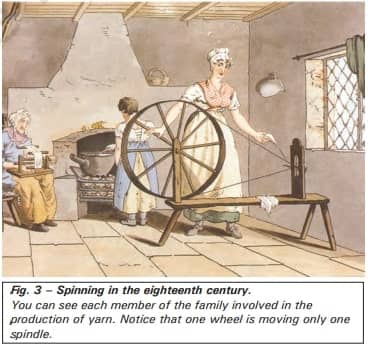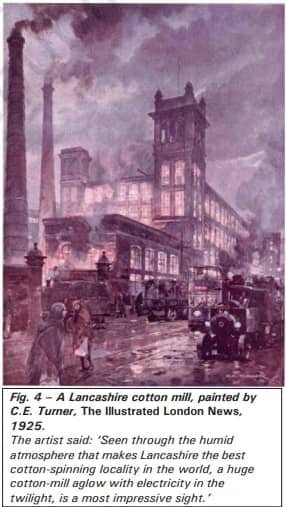NCERT History Class 10 | Before the Industrial Revolution – Concept and Notes
Topic & sub-topics covered: Before the Industrial Revolution, The Coming Up of the Factory, The Pace of Industrial Change: The Age of Industrialisation (All single detail notes are exam-oriented).
We have discussed in-depth and exam-oriented pointers that can be asked in the board exam of class 10th about “Before the Industrial Revolution, The Coming Up of the Factory, The Pace of Industrial Change” which is taken from the NCERT History book for class 10th chapter no. 4 “The Age of Industrialisation“.
Download NCERT History Chapter 4 Class 10th Notes PDF for The Age of Industrialisation
If you are in class 10th and looking for free NCERT History chapter 4 notes of the chapter The Age of Industrialisation class 10 that cover concepts, then you can download the free class 10th History chapter 4 notes “The Age of Industrialisation”. You should download this free PDF for future test or exam preparations.
Before the Industrial Revolution

1. Misconceptions About Industrialization:
- Common misconception: Industrialization is exclusively linked with the factory industry.
- Factory production and factory workers are often synonymous with the concept of industrialization.
2. Introduction to Proto-Industrialization:
- Proto-industrialization challenges the narrow view of industrialization linked only to factories.
- Industrial production for the international market existed before the widespread establishment of factories.
3. Proto-Industrialization in the Seventeenth and Eighteenth Centuries:
- Merchants from European towns moved to the countryside during the 17th and 18th centuries.
- They provided financial support to peasants and artisans to produce goods for the growing international market.
4. Circumventing Urban Constraints:
- Towns faced constraints due to powerful urban crafts and trade guilds.
- Merchants turned to the countryside to overcome restrictions on business establishments in towns.
5. Rural Workforce and Changing Agricultural Landscape:
- Poor peasants and artisans in the countryside collaborated with merchants in proto-industrial production.
- The shift from common lands to enclosed lands led to economic challenges for peasants.
6. Impact on Peasant Households:
- Peasant households eagerly accepted advances from merchants for producing goods.
- Proto-industrial work allowed peasants to supplement income from cultivation and utilize family labor resources.
7. Interconnected Town-Countryside Relationship:
- Town-based merchants were central to the proto-industrial system, but the actual production occurred in the countryside.
- Merchants coordinated various stages of production, from spinning to finishing, creating a network of commercial exchanges.
8. Role of London as a Finishing Centre:
- London emerged as a significant finishing centre in the proto-industrial system.
- The final stages of production, including dyeing and finishing, were completed in London before international trade.
9. Commercial Exchanges and Merchant Control:
- The proto-industrial system involved a network of commercial exchanges.
- Merchants controlled the production process, with goods produced by numerous workers in family farms, not factories.
10. Workforce Scale in Proto-Industrial System:
- Each merchant controlled 20 to 25 workers at each stage of production in the proto-industrial system.
- This decentralized model meant each clothier influenced hundreds of workers.
Understanding proto-industrialization challenges the conventional narrative of industrialization solely tied to factories, highlighting the complexity of historical economic transformations.
The Coming Up of the Factory

1. Emergence of Factories in England:
- The earliest factories in England appeared in the 1730s, but significant multiplication occurred in the late eighteenth century.
2. Cotton as a Symbol of Industrialization:
- Cotton production became a symbol of the industrial era, particularly in the late nineteenth century.
- In 1760, Britain imported 2.5 million pounds of raw cotton, which surged to 22 million pounds by 1787.
3. Innovations in Eighteenth-Century Production:
- Eighteenth-century inventions improved production steps like carding, twisting, spinning, and rolling.
- These innovations increased worker efficiency, output per worker, and the strength of produced threads and yarn.
4. Role of Richard Arkwright:
- Richard Arkwright introduced the cotton mill, a significant innovation in the late eighteenth century.
- Unlike dispersed rural production, the mill centralized production processes, enabling better management.
5. Centralization of Production in Mills:
- Mills brought together all production processes under one roof and centralized management.
- Centralization allowed for careful supervision, quality control, and labour regulation—challenges in decentralized rural production.
6. Transformation in the Early Nineteenth Century:
- Factories became a prominent feature of the English landscape in the early nineteenth century.
- Mills, with their new technology, captivated contemporaries, leading to a concentration of attention on them.
7. Impact on Production:
- Concentration in mills facilitated more efficient production and better quality control.
- The introduction of mills marked a shift from dispersed countryside production to centralized and managed industrial settings.
8. Technological Dazzle of Mills:
- The visibility and imposing nature of new mills, coupled with the magic of technology, dazzled contemporaries.
- The focus on mills sometimes overshadowed the continued existence of bylanes and workshops where production persisted.

